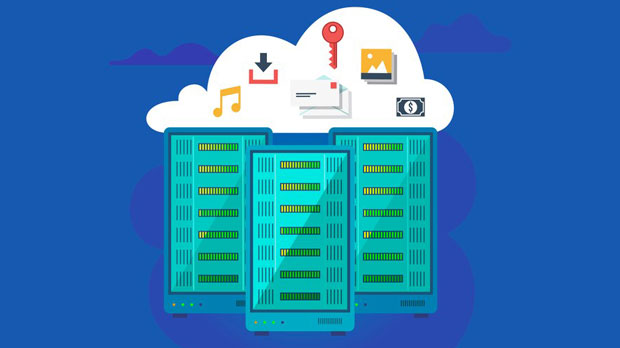In the world of online privacy and data protection, proxies play an important role. When it comes to mobile proxies, PYPROXY Mobile Proxies have gained attention due to their flexibility and the ability to support various networking protocols, including SOCKS5. SOCKS5, being one of the most versatile proxy protocols, is often used for tasks that require anonymity, bypassing geo-restrictions, or accessing P2P networks. However, the key question arises: Can PyProxy Mobile Proxies, when configured in SOCKS5 mode, support P2P (Peer-to-Peer) applications effectively? This article delves into this question by exploring how PyProxy Mobile Proxies work in SOCKS5 mode, their compatibility with P2P applications, and their overall benefits and limitations in such scenarios. Understanding PyProxy Mobile Proxies and SOCKS5 ModeTo evaluate whether PyProxy Mobile Proxies can support P2P applications, it is essential first to understand both the proxy service and the SOCKS5 protocol. A mobile proxy, like PyProxy, routes internet traffic through a mobile device's IP address. This provides an added layer of anonymity, making it ideal for use cases where users want to mask their original IP addresses, such as in data scraping, social media automation, and bypassing geo-blocks.SOCKS5, a version of the SOCKS (Socket Secure) protocol, is commonly used in scenarios requiring secure data transmission. Unlike HTTP proxies that only work with web traffic, SOCKS5 can handle all kinds of internet traffic, including P2P, FTP, email, and more. It also supports UDP (User Datagram Protocol) traffic, which is essential for real-time data transmission applications like video calls and P2P file sharing.When configured in SOCKS5 mode, PyProxy Mobile Proxies allow users to route traffic securely through mobile networks while maintaining privacy and anonymity. Now, let’s delve deeper into whether this setup can support P2P applications.The Role of SOCKS5 in P2P ApplicationsP2P applications are widely used for file sharing, video streaming, and communication. Popular P2P software like BitTorrent, eMule, and Skype rely on direct connections between users to exchange data. These connections require specific network configurations to ensure that packets are sent and received without interference.SOCKS5 is a robust protocol for these applications, as it allows P2P traffic to pass through the proxy without modification. This is crucial because P2P traffic often involves direct connections to remote peers, and a traditional HTTP proxy might disrupt these connections. SOCKS5, however, is designed to allow both inbound and outbound connections and supports complex routing mechanisms essential for P2P applications.Furthermore, sock s5 proxies also provide added benefits for P2P users, such as better handling of large volumes of data, lower latency, and support for applications that use multiple ports, which is typical for P2P traffic. This makes SOCKS5 an ideal choice for applications like torrenting and file sharing, where data needs to be exchanged between numerous users.Advantages of Using PyProxy Mobile Proxies for P2P Applications1. Anonymity and Privacy: When using PyProxy Mobile Proxies in SOCKS5 mode, users can effectively hide their original IP addresses while using P2P applications. This is particularly important for users concerned about privacy, as P2P networks often expose a user’s real IP address to other participants. By routing traffic through a mobile proxy, users can ensure that their online identity is not exposed.2. Access to Geo-Restricted Content: Many P2P applications and services are geo-restricted, meaning that users in certain regions cannot access them. By using a mobile proxy in SOCKS5 mode, users can bypass these restrictions by routing their traffic through an IP address located in a different region or country, thereby enabling access to otherwise restricted content.3. Enhanced Security: PyProxy Mobile Proxies, when configured in SOCKS5 mode, provide an additional layer of encryption, which is beneficial for protecting data during transfers. This encryption ensures that sensitive information, such as login credentials or personal files shared through P2P networks, remains secure.4. Improved Performance: With the ability to handle high traffic loads and support for both UDP and TCP traffic, SOCKS5 proxies tend to offer better performance compared to HTTP proxies. For users involved in data-heavy tasks such as large file sharing through P2P, this can result in faster, more reliable transfers.Challenges and Limitations of Using PyProxy Mobile Proxies with P2P ApplicationsWhile PyProxy Mobile Proxies offer a variety of benefits in SOCKS5 mode, there are also certain limitations and challenges to be aware of when using them with P2P applications.1. Connection Stability: Mobile proxies generally rely on cellular networks, which can be less stable than fixed broadband connections. This can sometimes lead to connection drops, slower speeds, or intermittent availability, which could disrupt the experience of using P2P applications.2. Bandwidth Constraints: Mobile data networks, especially those with limited bandwidth or lower speeds, might not offer the same performance levels as traditional broadband connections. For users engaging in data-intensive P2P activities, such as streaming high-definition videos or downloading large files, the bandwidth limitations of mobile proxies may pose a challenge.3. Limited Availability of IP Addresses: Depending on the service provider, mobile proxies might have a limited pool of IP addresses available for use. In some cases, this can cause issues with certain P2P applications that require multiple IP addresses for optimal performance. This could lead to throttling or slowdowns in file-sharing speeds.4. Compatibility Issues with Certain P2P Apps: Some P2P applications may not work optimally with mobile proxies, especially those that rely on certain types of network configurations or require direct peer-to-peer connections. While SOCKS5 supports a wide range of traffic types, there may still be occasional compatibility issues with certain protocols or applications.PyProxy Mobile Proxies, when used in SOCKS5 mode, can effectively support a wide range of P2P applications. The flexibility, security, and anonymity provided by the SOCKS5 protocol make it an excellent choice for P2P traffic, ensuring that users can share files, communicate, and access content while maintaining privacy and security.However, as with any technology, there are some limitations, such as connection stability and bandwidth constraints, that users need to consider. It is essential to assess the specific requirements of the P2P application in question and ensure that the mobile proxy service can meet those needs before relying on it for high-performance tasks.Ultimately, for users looking for an effective and secure way to use P2P applications while maintaining anonymity, PyProxy Mobile Proxies in SOCKS5 mode offer a viable solution with significant benefits, though careful consideration of their limitations is necessary.
Oct 22, 2025



































































